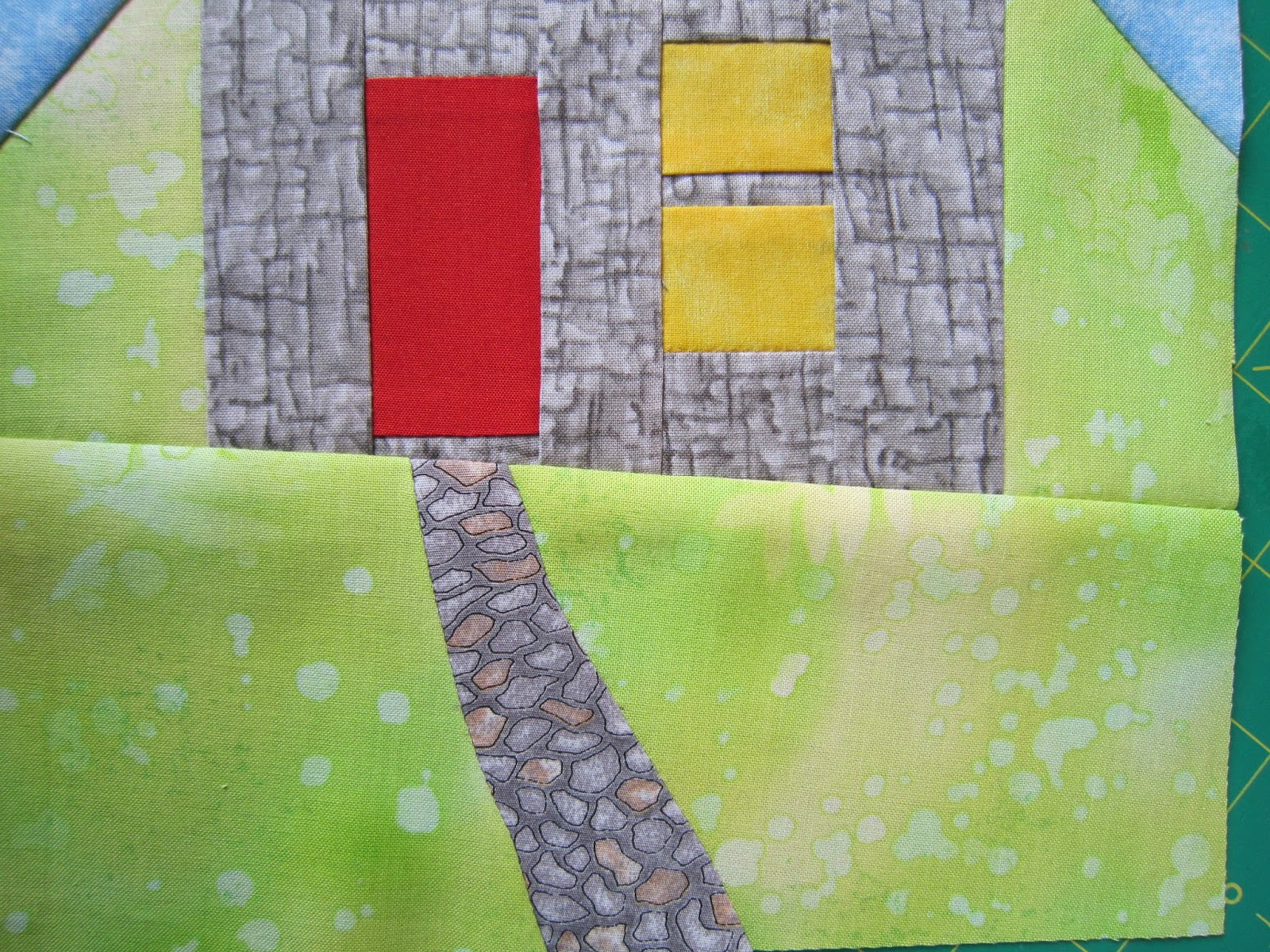 For yours, choose a range of materials that symbolise your preferred landscape and lay them out into a pleasing arrangement before you start.
For yours, choose a range of materials that symbolise your preferred landscape and lay them out into a pleasing arrangement before you start. These are cut into strips about 12 inches wide and varying in depth from 2 to 5 inches. They will be overlapped before cutting the curve so they need to be a little deeper than the finished strip will be to give you some artistic flexibility!
These are cut into strips about 12 inches wide and varying in depth from 2 to 5 inches. They will be overlapped before cutting the curve so they need to be a little deeper than the finished strip will be to give you some artistic flexibility!Strips can be made from smaller pieces joined together as this will create a more interesting landscape. The strip shown here on the right with 4 pieces joined together was cut from the end of another landscape I had made which was too wide.
 Start from the front of your scene (the bottom strip) and overlap this with the next strip up. Overlap it enough so that you can cut a gentle curve with your rotary cutter through both fabrics. No need to pin it, just be sure not to get your fingers too near to the rotary cutter. This was demonstrated on the DVD which is still available to borrow on request.
Start from the front of your scene (the bottom strip) and overlap this with the next strip up. Overlap it enough so that you can cut a gentle curve with your rotary cutter through both fabrics. No need to pin it, just be sure not to get your fingers too near to the rotary cutter. This was demonstrated on the DVD which is still available to borrow on request. Pull apart and remove surplus fabric.
 Turn the strips to the wrong side, butt the two curves up together again and put a matching up mark on the centre of the two edges with a soft pencil. Use this mark as a starting point to pin your curved seams together, gently easing the edges together with your fingers and pinning from the raw edges inwards.
Turn the strips to the wrong side, butt the two curves up together again and put a matching up mark on the centre of the two edges with a soft pencil. Use this mark as a starting point to pin your curved seams together, gently easing the edges together with your fingers and pinning from the raw edges inwards. 
Now sew a very narrow seam removing the pins as you go and keeping the edges of the curves together.

Here you can see the narrow seam.
It's OK to press the seams open as you go if you have used a pencil mark on the back but remember that marks made with a vanishing marking pen will be made permanent with a hot iron so remove them with water first.

 Continue on strip by strip cutting curves, marking a match-up point, pinning, sewing a narrow seam and pressing open.
Continue on strip by strip cutting curves, marking a match-up point, pinning, sewing a narrow seam and pressing open. I found that it helped me to match the curves by trimming the edges of the joined pieces level with the one about to be joined. This gives 3 matching points - the pencil mark and the two edges.
Finish the landscape by adding some sky at the top to give the scene depth.
Probably best to leave any major trimming of the edges until you are ready to add it to the quilt top later.


































 Draw 2 diagonal lines and stitch 1/4in away from these lines in a 'windmill' pattern from the edge to the centre. See stitching in red.
Draw 2 diagonal lines and stitch 1/4in away from these lines in a 'windmill' pattern from the edge to the centre. See stitching in red.







